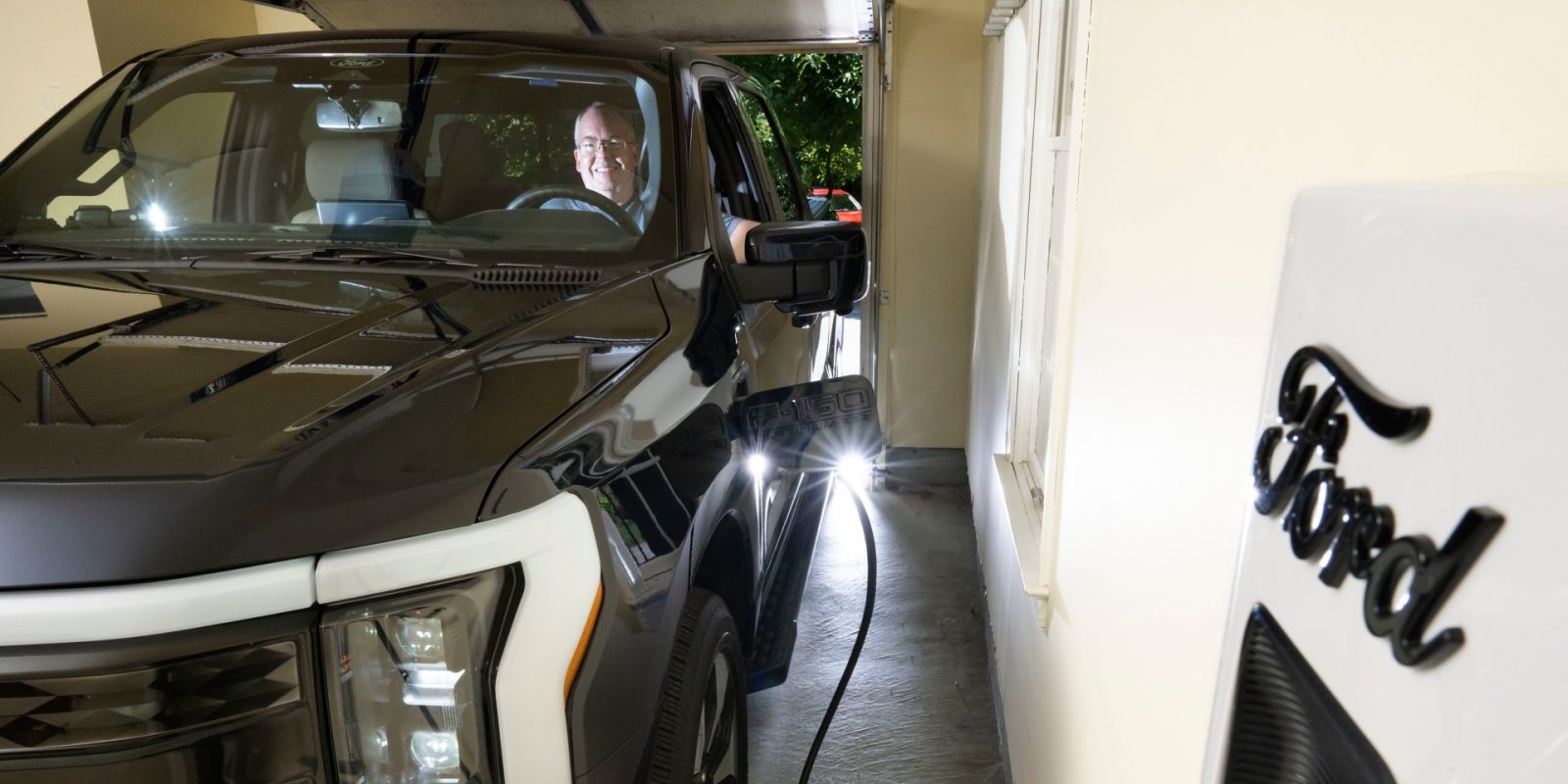
Solar + storage provider Sunrun has launched the US’s first vehicle-to-home power plant using customer-owned bidirectional Ford F-150 Lightning electric trucks.
Vehicle-to-home power plants
Bidirectional charging technology allows EVs to both draw power from the grid and send stored energy back to homes. According to Sunrun, this setup can provide substantial energy resilience for homeowners, especially during power outages caused by severe weather events or grid failures.
The US Department of Energy awarded funding to Maryland’s largest utility, Baltimore Gas and Electric Company (BGE), to create the EV virtual power plant. The utility partnered with Sunrun and three Sunrun customers in BGE’s service territory in a regulator-approved initiative.
The customers each own Ford F-150 Lightnings, as well as Ford Charge Station Pro and Home Integration Systems sold exclusively through Sunrun. (Brian Foreman, pictured above, of Howard County, Maryland, was the first person in the US to power his home with energy from his EV’s battery while the grid was operating normally as part of Sunrun and BGE’s vehicle-to-home power plant initiative.)
Sunrun is networking and monitoring the enrolled F-150 Lightning trucks as they share stored energy from June 1 to September 30, 2024, between 5-9 pm on weekdays. The enrolled customers will receive a payment based on the amount of energy shared – estimated to be $800 over the program’s four months.
Sunrun CEO Mary Powell said:
This program is a significant proof of concept – no other market player has done this – and the goal is to expand these programs all around the country.
This exciting partnership lays the foundation for the power grid of the future where electric vehicle owners can contribute to grid resiliency and utility price stability for everyone.
The summer heat can be especially stressful on our power grid, which is why proving the use of stored energy in electric vehicles for capacity is so important.
Bidirectional charging is gaining traction due to advancements in EV battery technology. Batteries can store more energy and discharge it efficiently, making them viable alternatives to traditional backup generators. Several auto manufacturers, such as Ford and Nissan, have produced EVs compatible with this technology.
Electrek’s Take
Bidirectional EV charging is a natural next step for Sunrun, which has been a major player in ramping up residential solar + battery storage adoption. (Disclosure: I have a Sunrun solar array on my roof.)
Sunrun’s project impact is potentially far-reaching. If widely adopted, vehicle-to-home systems could help support power grids during peak times. They could also facilitate more solar integration, as excess clean power can be stored in vehicle batteries and used when needed. This initiative aligns with broader efforts to reduce dependence on fossil fuels.
Click here to find a local dealer that may have the Ford F-150 Lightning in stock. –trusted affiliate link
To limit power outages and make your home more resilient, consider going solar with a battery storage system. In order to find a trusted, reliable solar installer near you that offers competitive pricing, check out EnergySage, a free service that makes it easy for you to go solar. They have hundreds of pre-vetted solar installers competing for your business, ensuring you get high-quality solutions and save 20-30% compared to going it alone. Plus, it’s free to use and you won’t get sales calls until you select an installer and you share your phone number with them.
Your personalized solar quotes are easy to compare online and you’ll get access to unbiased Energy Advisers to help you every step of the way. Get started here. –trusted affiliate link*
FTC: We use income earning auto affiliate links. More.





Comments